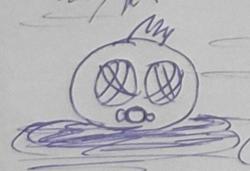Hey guys. I am extremely interested in jumping into the whole RayTracing bandwagon to get with the times and increase the realism in my app. Problem is, this technology is so new, it is difficult to find any sort of tutorial on this sort of thing, even if it is a simple triangle. However, after doing some digging, the main method used is to use a Compute Shader. To be quite honest, I never used one. I mainly have been using only vertex shaders and fragment shaders. Compute shaders I found are not part of the rendering pipeline at all, but somehow feed information in parallel to the GPU to speed up processing, which adds more confusion because it only feeds information not rendering to the GPU. I could not find any sample code showing what this could look like. And the code that is out there are either too complex with way too much overhead in getting the bits needed in rendering a simple ray tracer, or are all Unity and Unreal Engine. Try Googling it yourself and its mainly all Unity and Unreal Engine, and very difficult to find anything. It gets to the point you end up finding Chinese sites.
So I gave up in the search and brought up this topic here. I was curious in knowing if any of you have any information in doing a simple Ray Tracer. What is a Compute Shader, and how exactly does a Compute Shader get used for Ray Tracing because I am still lost? Thanks in advance.











